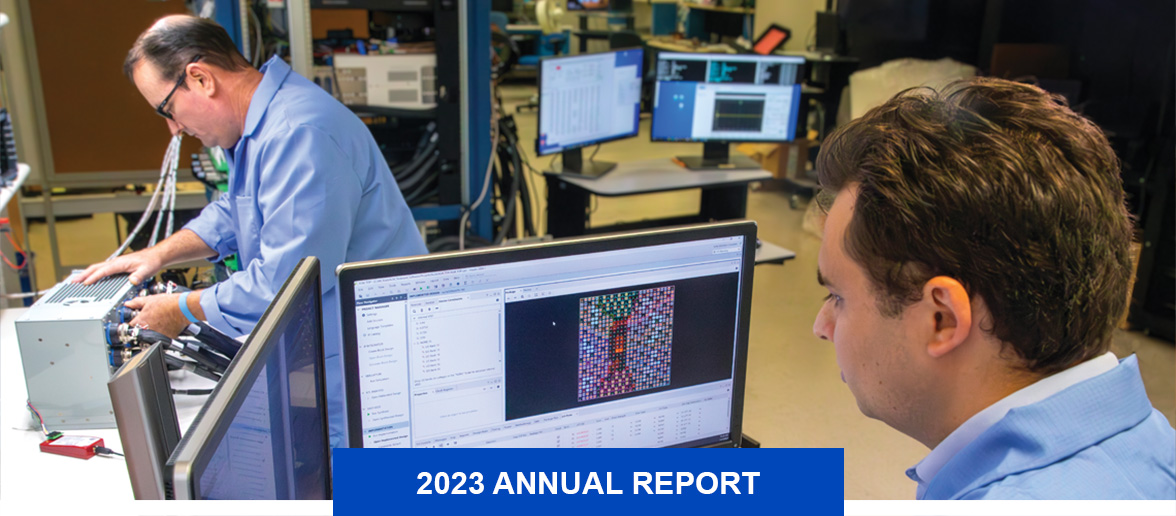
About the Header
For the U.S. Air Force, SwRI redesigned and tested the Central Interface Control Unit (CICU) of the A-10C Thunderbolt II. The CICU serves as the aircraft’s main mission processor controlling data to guide the pilot.
Southwest Research Institute is on the forefront of radiofrequency solutions and cybersecurity defenses. With more than 70 years of research and development in communications intelligence (COMINT), signals intelligence (SIGINT) and electronic intelligence (ELINT), SwRI advances existing technologies and breaks ground to deliver the next era of COMINT, SIGINT and ELINT solutions. SwRI signal acquisition and analysis technology, tools and techniques detect, intercept and interrupt a range of radiofrequency signals to support air, sea and ground-based operations. These activities provide direction finding, geolocation, situational awareness, tracking, and search and rescue, supporting efforts to thwart adversaries.
SwRI’s powerful electronic warfare (EW) technology detects and defeats enemy signals on the electromagnetic spectrum to protect U.S. and allied forces. As enemy signals continually evolve and change, SwRI stays ahead of emerging threats, providing unmatched EW solutions and enhancing safety and security for military assets. New technology is designed for interoperability, allowing quick and efficient component updates without a total system replacement or redesign.
Institute initiatives support an intelligence accord between the U.S., Australia, Canada, New Zealand and the United Kingdom for technology and data sharing. SwRI’s most recent work for the Royal Australian Navy includes designing, building and delivering maritime communications electronic support equipment. SwRI is providing shipboard antennas for data collection and below-deck equipment. These include SwRI-developed algorithms that process signals, allowing operators to make immediate data-based decisions.
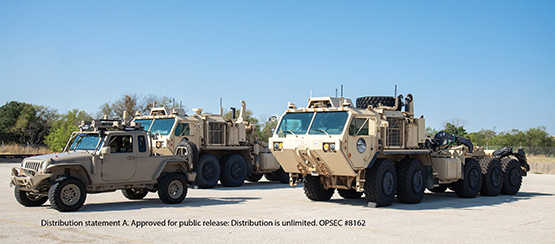
SwRI helped the U.S. military develop, integrate and test robotics systems on ground vehicles ranging from ATVs to trucks and vehicles that transport heavy equipment. This work included autonomy, cybersecurity, and systems modeling and simulation R&D.
The Defense Advanced Research Projects Agency (DARPA) selected SwRI to develop small, light, inexpensive low-power distributable nodes to monitor high-frequency (HF) radio signals. The nodes will provide scalable and secure communications, to improve warfighter situational awareness and support devices deployed more than 1,000 kilometers apart. As part of DARPA’s Cancun Program, the nodes will record and relay portions of the HF radio band for analysis. SwRI will complete the first phase of the program in December 2024.
The Banshee Phoenix system, an EW technology formerly known as ARCADE, represents a fusion of various technologies into one structure. The modular and adaptable system, installed aboard an aircraft, counters swift and unexpected adversarial attacks affecting the electromagnetic spectrum. Developers showcased the system’s high-performance capabilities at Northern Edge 2023, a multinational training exercise held in Alaska in May. Banshee Phoenix demonstrated rapid, precise mid-flight adjustments. The development team is exploring additional applications for Banshee Phoenix, including using radio frequency to transfer cyber data to isolated computer networks.
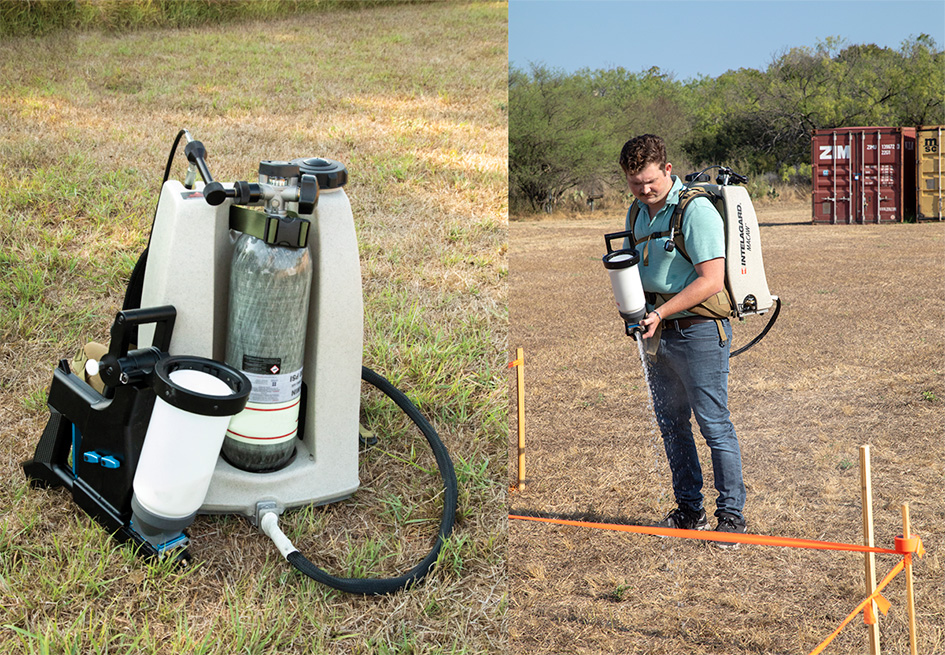
In 2023, SwRI updated portable technology to deliver a slippery antitraction material that effectively denies mobility and access to selected areas, making it impossible for people or vehicles to traverse.
For decades, SwRI has been involved in form, fit, function and replacement activities to modernize the U.S. Air Force’s aging fleet of aircraft. The B-1B Lancer is a long-range, supersonic bomber, which has served the Air Force since 1986. In 2023, SwRI engineers redesigned the B-1B’s Fuel Center of Gravity Management System (FCGMS), which tracks fuel usage and controls fuel transfer to the aircraft’s four turbine engines, while calculating corrections to the bomber’s center of gravity as fuel is depleted. The FCGMS update extends the B-1B’s service life, ensuring the system can support the aircraft’s next phase of service.
In 1978, the Air Force began using the A-10 for close air support of ground forces, search and rescue, and forward air controller missions. SwRI has supported A-10 advancements for over 30 years, most recently redesigning the A-10C Thunderbolt II Central Interface Control Unit (CICU), the aircraft’s main mission processor. The CICU handles the digital stores management system, providing smart weapons and situational awareness data to the pilot. The upgrade increases CICU reliability and fortifies the unit hardware to withstand extreme environmental temperatures and vibrations from the aircraft’s seven-barrel Gatling-style autocannon. In 2023, SwRI completed the design and integration of the CICU components, proving that the unit can run government-developed flight software. Integration testing is underway, and flight testing is expected to begin in early 2024.

For automotive cybersecurity, SwRI evaluates a comprehensive “Zero-Trust” architecture that employs layers of authentication using a laboratory test network to simulate various military and consumer vehicles.
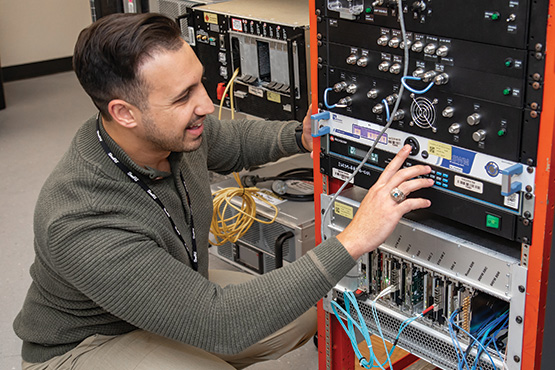
SwRI showcased this high-performance rack-mounted Banshee Phoenix system on a C-12 Huron military aircraft during Northern Edge 2023, a multinational training exercise held in Alaska.
As a leader in neuromorphic processing, SwRI is exploring how advanced artificial intelligence and neuromorphic engineering can help protect military troops and assets. Neuromorphic engineering models computers after the human brain with spiking neural networks that mimic human data processing. The computer “learns” more like a human, leading to faster processing and lower power consumption. SwRI is developing a cognitive EW architecture for airborne and shipboard applications integrating these next-generation technologies. Equipped with advanced AI power, cognitive EW quickly adapts to adversarial attempts to locate an aircraft or battleship, disrupting electromagnetic signals on the spot to confuse the enemy and conceal friendly forces. Cognitive EW controls the electromagnetic spectrum to strengthen protection and defense.
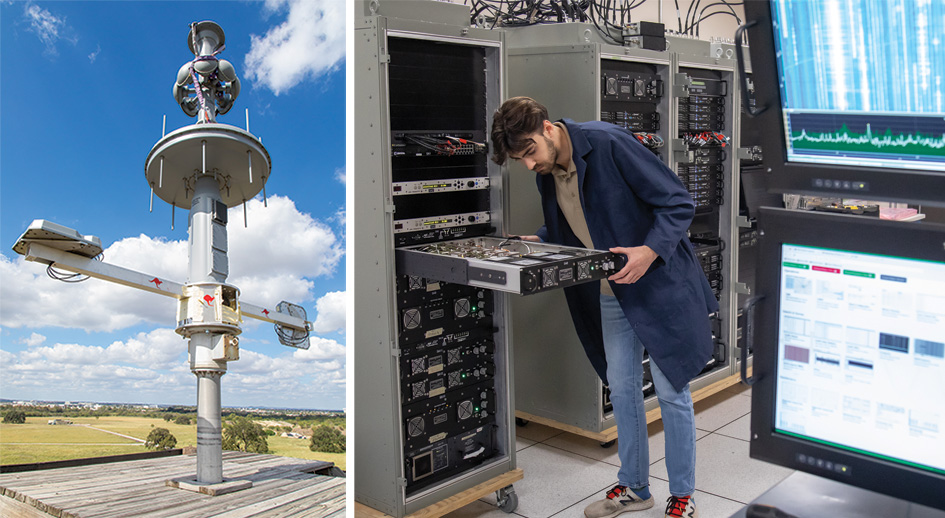
SwRI developed a maritime communications electronic support system for the Royal Australian Navy, which includes an antenna, signal processing equipment and operator display technology.
SwRI engineers used internal research funding to develop the Audio Localization for Team Communication (ALT-C) platform. The prototype drop-in system is designed to give the impression of a sound source as emanating from a direction within a 3D environment, a critical capability for military, first responder and security radio communications. Integrating binaural audio could help users identify the locations of other users intuitively, through the perceived 3D directional representation of the incoming audio. During this program, the technical team successfully implemented a real-time spatial audio processing algorithm onboard a microprocessor. The system receives incoming audio from a standard two-way radio, using onboard GPS and inertial measurement units to assign direction and elevation information to the audio. The audio can then be played into the receiver’s headset in real time with imperceptible delay.
SwRI is also advancing cutting-edge hypersonics technology, exploring materials science, aerodynamics, propulsion, manufacturing and system performance. The Institute is home to a range of ballistic launch facilities and flight ranges providing extreme hypersonic flight environments that cannot be achieved in wind tunnels. In the last year, engineers used SwRI’s ballistic facilities to evaluate the aerodynamics of novel system designs, demonstrate unique laser-based diagnostic techniques, and probe high-temperature chemical reactions around hypersonic test articles in new and innovative ways.
SwRI continues to develop automotive cybersecurity solutions to protect proliferating embedded electronics and networks in vehicles. Staff members identified weaknesses in conventional approaches to protect individual components, exploring a comprehensive “Zero-Trust” (ZT) architecture that employs layers of authentication. ZT requires devices to prove their identity rather than assuming trust. SwRI demonstrated ZT in laboratory test networks to simulate consumer and military vehicles.
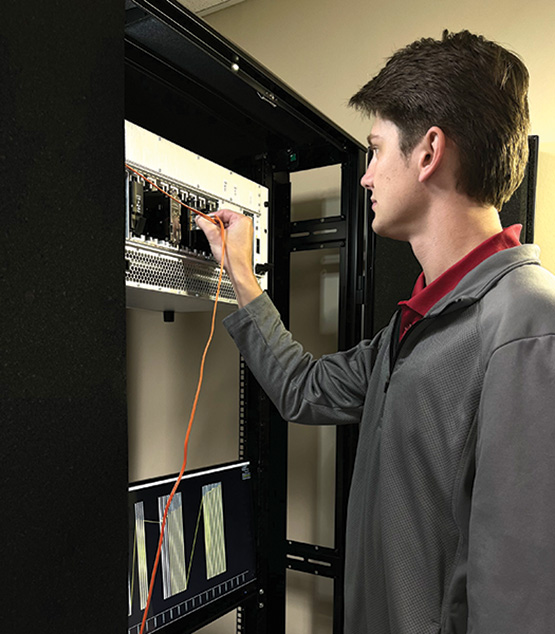
SwRI’s Ultra-Wideband Receiver is an adaptable, “continuously staring,” next-generation electronic warfare system, using cutting-edge algorithms to detect advanced enemy radar signals. The open-system-based receiver can be integrated into existing defense systems.
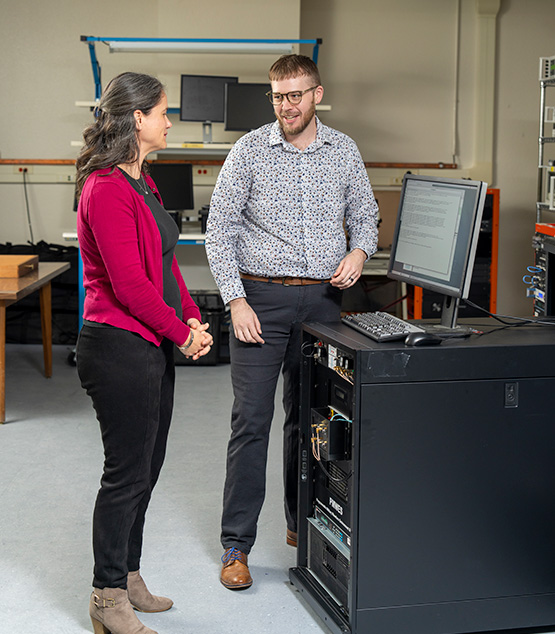
Engineers developed the Programmable Military Waveform Environment Simulator (PMWES) to test and validate SIGINT equipment before operational deployment. The system emulates fast-frequency-hopping, anti-jam military radios.
